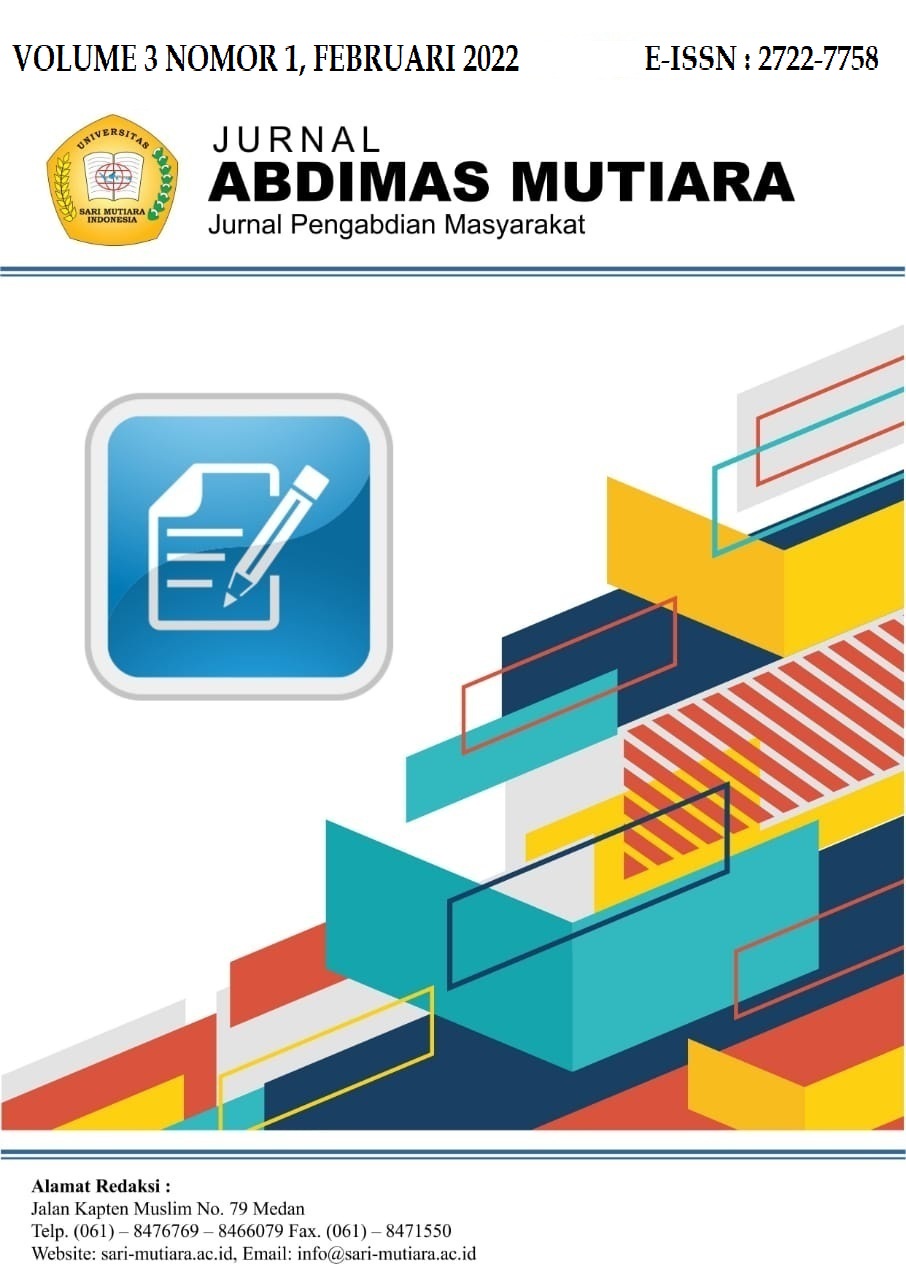EDUKASI PENTINGNYA 1000 HARI PERTAMA KEHIDUPAN ANAK SEBAGAI UPAYA PENCEGAHAN STUNTING
Keywords:
First 1000 Days of Child's Life, StuntingAbstract
Stunting or short is a condition of failure to thrive in children under five years of age (toddlers) due to chronic malnutrition and repeated infections, especially in the first 1,000 days of life (HPK), from fetus to child aged 23 months. Children are classified as stunted if their length or height is below minus two standard deviations of length or height of children their age. Stunting is a major threat to the quality of Indonesia's Human Resources (HR), as well as a threat to the nation's competitiveness. This is because children who fail to grow are not only disturbed by their physical growth, but also have impaired brain development, which of course will greatly affect their ability and achievement in school, as well as productivity and creativity in productive ages. The purpose is to prevent an increase in the incidence of stunting in toddlers. This activity is carried out in the form of health promotion through education about the first 1000 days of a child's life using the lecture method. The target of this activity is pregnant women. This activity was attended by 33 pregnant women and mother of toddler. The results of the evaluation showed that the knowledge of the activity participants increased after the education was carried out. Increased knowledge is in line with increasing public awareness of the importance of the 1000 HPK period so that it is expected that the prevalence of stunting increases can be prevented.
Downloads
References
Azrimaidaliza, Nursal, D. G., Rahmy, H. A., & Asri, R. (2019). Characteristics of Stunted Children Aged 24-36 Months in Padang City. Malaysian Journal of Public Health Medicine
Black, R. E., & et al. (2013). Maternal and child undernutrition and overweight in low-income and middle-income countries. Lancet, 427–451.
Kemenkes RI. Hasil utama RISKESDAS 2018. Badan Penelitian dan Pengemb Kesehatan, Kementrian Kesehatan Republik Indonesia. 2019. Available from: https://www.litbang.kemkes.go.id/laporan-riset-kesehatan-dasar-riskesdas/
Kementerian Kesehatan RI. Kementerian Kesehatan RI. (2019). Laporan Provinsi Sumatera Barat Riskesdas 2018. Jakarta: Lembaga Penerbit Badan Penelitian dan Pengembangan Kesehatan
Pem, D. (2015). Factors Affecting Early Childhood Growth and Development : Golden 1000 Days Advanced Practices in Nursing. Journal of Advanced Practices in Nursing, 1–4.
Sudargo, T. (2018). 1.000 Hari Pertama Kehidupan. In. Yogyakarta: Gadjah Mada University Press.
WHO. (2010). Nutrition Landscape Information System (NLIS) Country Profile Indicators. Interpretation Guide Switzerland: WHO Press
Downloads
Published
Issue
Section
License
Copyright (c) 2022 Jurnal Abdimas Mutiara

This work is licensed under a Creative Commons Attribution-ShareAlike 4.0 International License.













